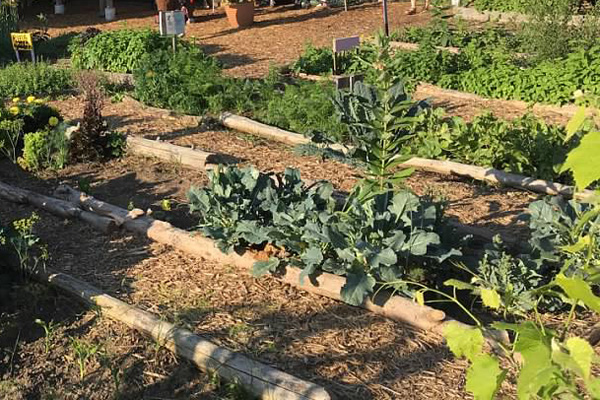The 20-Second Trick For City Blooming
Table of ContentsAn Unbiased View of City BloomingCity Blooming - QuestionsThe 10-Minute Rule for City Blooming4 Simple Techniques For City BloomingThe Best Guide To City Blooming
Intrigued in expanding food up for sale in the City of Chicago? Considering starting a neighborhood yard? Modifications to the Chicago Zoning Regulation allow agricultural uses like neighborhood yards and metropolitan farms in many components of the city. Below is a list of often asked concerns regarding the rules and policies that growers must consider when planning a metropolitan agriculture project.
The zoning modification does not change any type of other codes handling composting, structure permits, buying or leasing City owned residential property, service licenses or ecological contamination. There are existing codes that control these problems and they remain completely impact and may be applicable to your task. Community yards are typically had or managed by public entities, public companies or community-based organizations and kept by volunteers.
Urban farms expand food that is meant to be sold, either on a nonprofit or for-profit basis. As a result of their industrial objective, city farms need a service license. Yes. A neighborhood yard is allowed to market surplus generate that was expanded on website if the sales are accessory or secondary to the garden's primary purpose described over.
The Of City Blooming
The quantity of garden compost material can not surpass 25 cubic backyards at any given time according to the requirements in 7-28-715 of the City's Municipal Code. Because the dirt at most brand-new garden websites needs modifying, garden compost, soil, timber chips, or various other materials can be gotten to create or enhance the expanding area.

If a building permit is needed then the hoophouse will be taken into consideration an accessory building. You can discover more concerning the building authorization demands by calling the Division of Buildings. The 25,000-square-foot dimension limit is intended to protect against a single neighborhood yard from dominating an offered block or taking away from the block's existing residential or industrial personality.
The limit does not apply to yards located in Public Open Room (POS) areas. Can there be greater than one area garden that is 25,000 square feet on a solitary block? Yes. The dimension limit puts on private yards, not to individual blocks. No. Fence is not called for, nevertheless, gardens that have large vehicle parking locations may be needed to mount fencing or various other landscaping attributes.
An Unbiased View of City Blooming
B1 & B2 areas call for that all industrial use activities be carried out inside. Is secure fencing needed for metropolitan ranches? Fencings may be called for, along with landscape design and testing, for specific car park locations and outside job or storage space areas depending on place and the details activity taking area.
Yes. Urban farms require structure licenses and zoning approvals before construction. Various other forms of city evaluation might be required depending upon particular structures, activities, size, landscape design, licensing, public health and stormwater administration issues. A lot of these requirements are recognized in the job design or allowing process, however, the candidate may be liable to individually determine details licenses or allows that might be required.
Yes. The kind of permit is figured out by what is happening at the website. The Division of Company Matters and Consumer Defense can help establish the particular kind of business license that's required. Yes. Off street car parking is needed for the majority of business projects in Chicago. The required number of garage is based upon the view it now number of staff members functioning on site and not the square video footage of the expanding room.
Little Known Facts About City Blooming.

A city farm can sell compost product created on website, nevertheless, the procedure needs to conform with the guidelines in 7-28-715 of the Chicago Municipal Code. Aquaponic systems are permitted inside on city ranches in lots of zoning districts.
Up to 5 hives or swarms of honey might be maintained as an accessory usage. Beekeepers should register with the Illinois Department of Agriculture. For even more info regarding the recommended zoning change you may get in touch with the Department of Housing and Economic Advancement, Bureau of Preparation and Zoning at 312.744.8563.
Farming in cities and urban locations A city farm in Chicago. Urban farming refers to various techniques of cultivating. https://danielnold94107.wixsite.com/my-site-1/post/city-gardening-a-green-oasis-in-urban-spaces, handling, and dispersing food in city areas. The term likewise relates to the location activities of pet husbandry, aquaculture, beekeeping, and cultivation in an urban context. Urban farming is distinguished from peri-urban farming, which takes place in backwoods beside suburban areas.
The Ultimate Guide To City Blooming
, who look for to create social networks started on a common principles of nature and area holism. These networks can establish by means of official institutional support, ending up being incorporated right into neighborhood town preparation as a "transition community" motion for lasting city advancement.
In either case, the more direct access to fresh vegetable, fruit, and meat products that might be realised with urban agriculture can boost food protection and food safety while reducing food miles, resulting in reduced greenhouse gas exhausts, thereby contributing to climate modification reduction. Some of the first evidence of metropolitan farming comes from Mesopotamia.